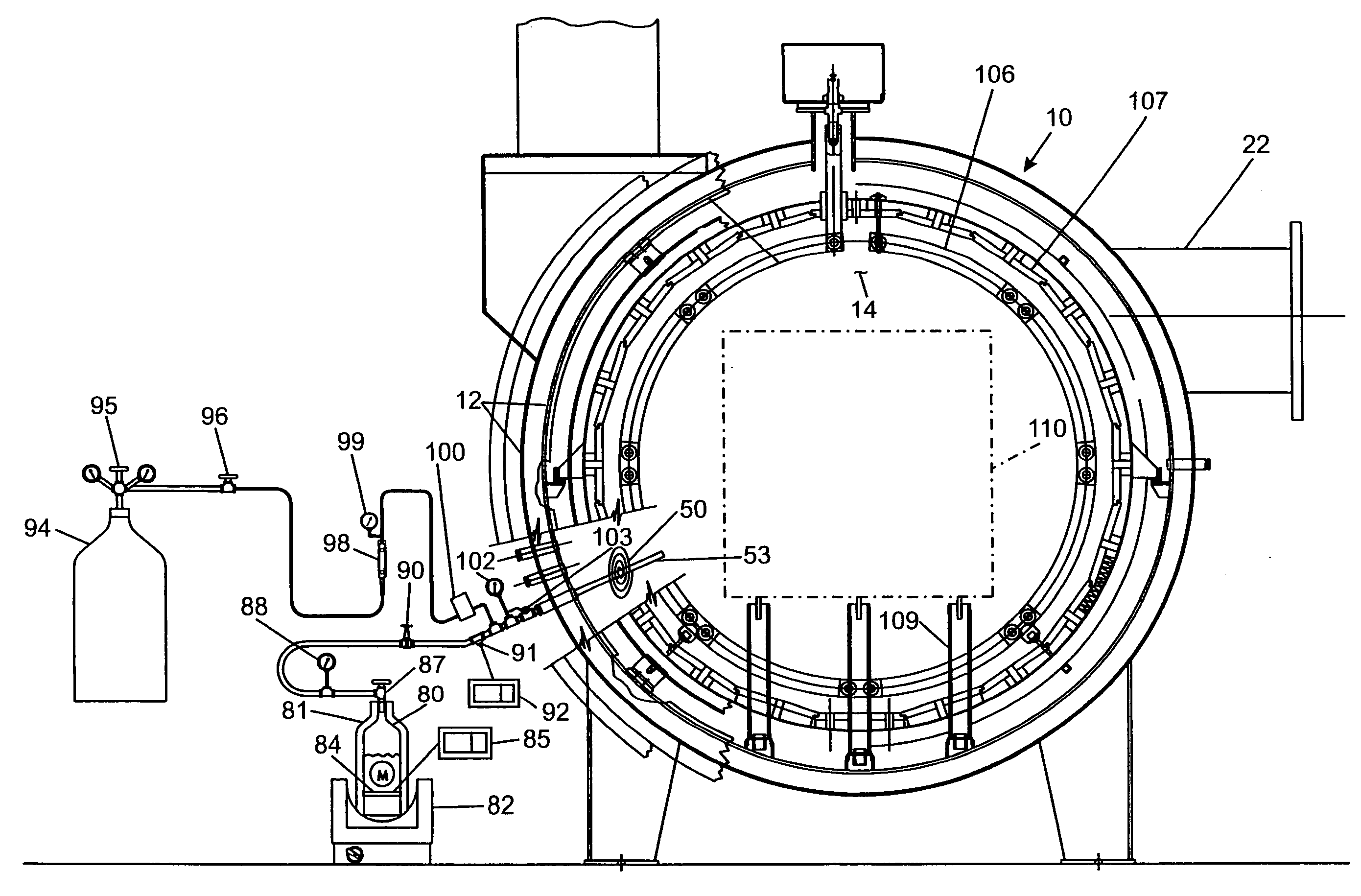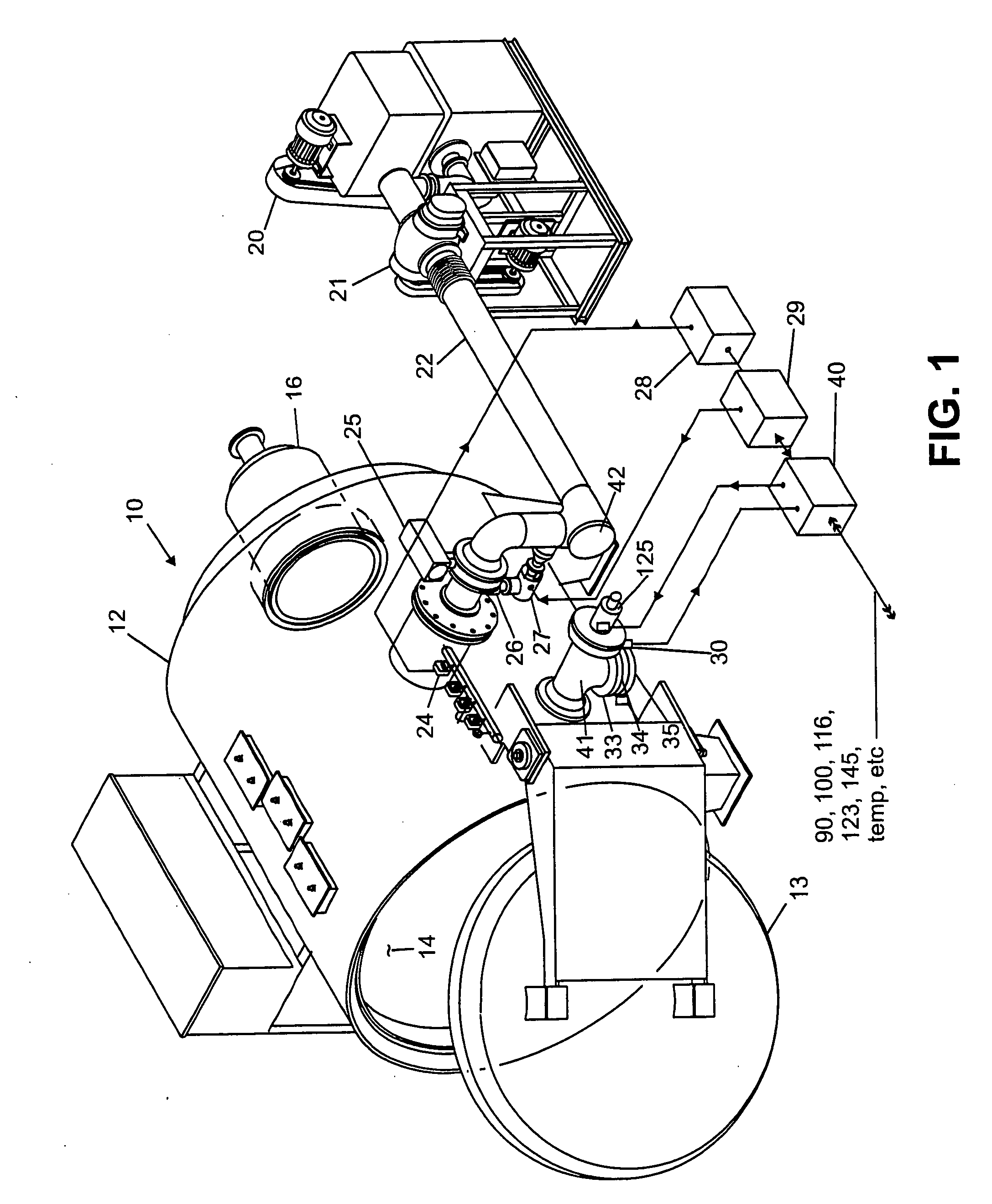Furnace for vacuum carburizing with unsaturated aromatic hydrocarbons
a technology of unsaturated aromatic hydrocarbons and vacuum carburizing furnace, which is applied in the direction of furnaces, heat treatment equipment, manufacturing tools, etc., can solve the problems of uneven carburizing, inability to produce stress risers and change parts, etc., to achieve precise control and repeatability of the process
- Summary
- Abstract
- Description
- Claims
- Application Information
AI Technical Summary
Benefits of technology
Problems solved by technology
Method used
Image
Examples
Embodiment Construction
[0067] The Detailed Description of the Invention set forth below is for the purpose of illustrating preferred and alternative embodiments of the invention and is not necessarily for the purpose of limiting the invention.
[0068] A. The Hydrogenation and Carburizing Mediums.
[0069] Without wishing to be bound by any specific theory, and more particularly, without limiting the invention to any specific chemical theory, it is well known in the petrochemical field to hydrogenate aromatic hydrocarbons, particularly benzene is hydrogenated to cyclohexane. (See for example, U.S. Pat. No. 5,856,602 to Gildert et al., issued Jan. 5, 1999, entitled “Selective Hydrogenation of Aromatics Contained in Hydrocarbon Streams” and its related U.S. Pat. No. 5,773,670, entitled “Hydrogenation of Unsaturated Cyclic Compounds.”) Typically, a distillation process is used in the petroleum refinery field. However, gas phase hydrogenation is disclosed in U.S. Pat. No. 4,731,496 to Hu et al., issued Mar. 15, 1...
PUM
| Property | Measurement | Unit |
|---|---|---|
| temperature | aaaaa | aaaaa |
| temperature | aaaaa | aaaaa |
| temperatures | aaaaa | aaaaa |
Abstract
Description
Claims
Application Information
 Login to View More
Login to View More - R&D
- Intellectual Property
- Life Sciences
- Materials
- Tech Scout
- Unparalleled Data Quality
- Higher Quality Content
- 60% Fewer Hallucinations
Browse by: Latest US Patents, China's latest patents, Technical Efficacy Thesaurus, Application Domain, Technology Topic, Popular Technical Reports.
© 2025 PatSnap. All rights reserved.Legal|Privacy policy|Modern Slavery Act Transparency Statement|Sitemap|About US| Contact US: help@patsnap.com



